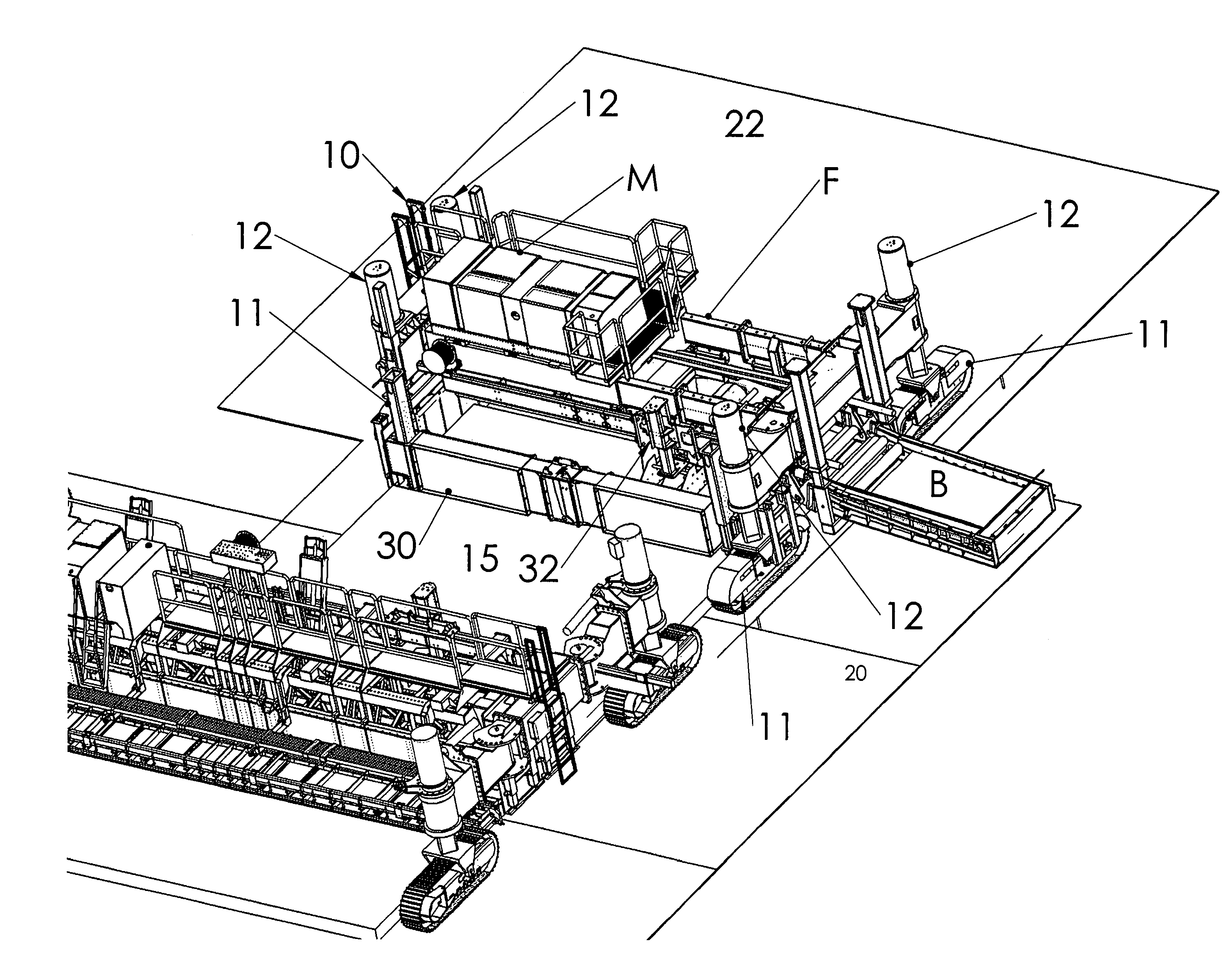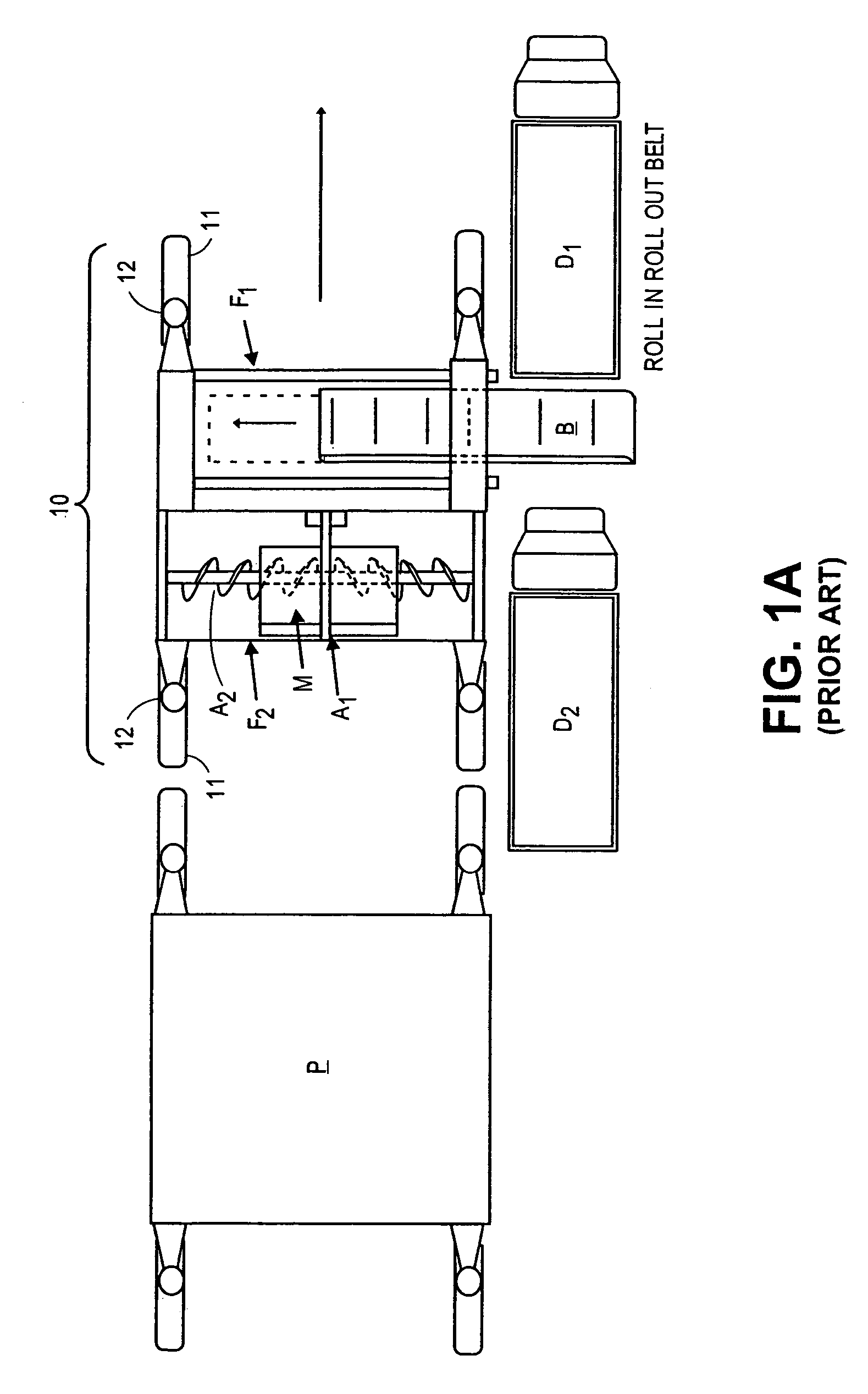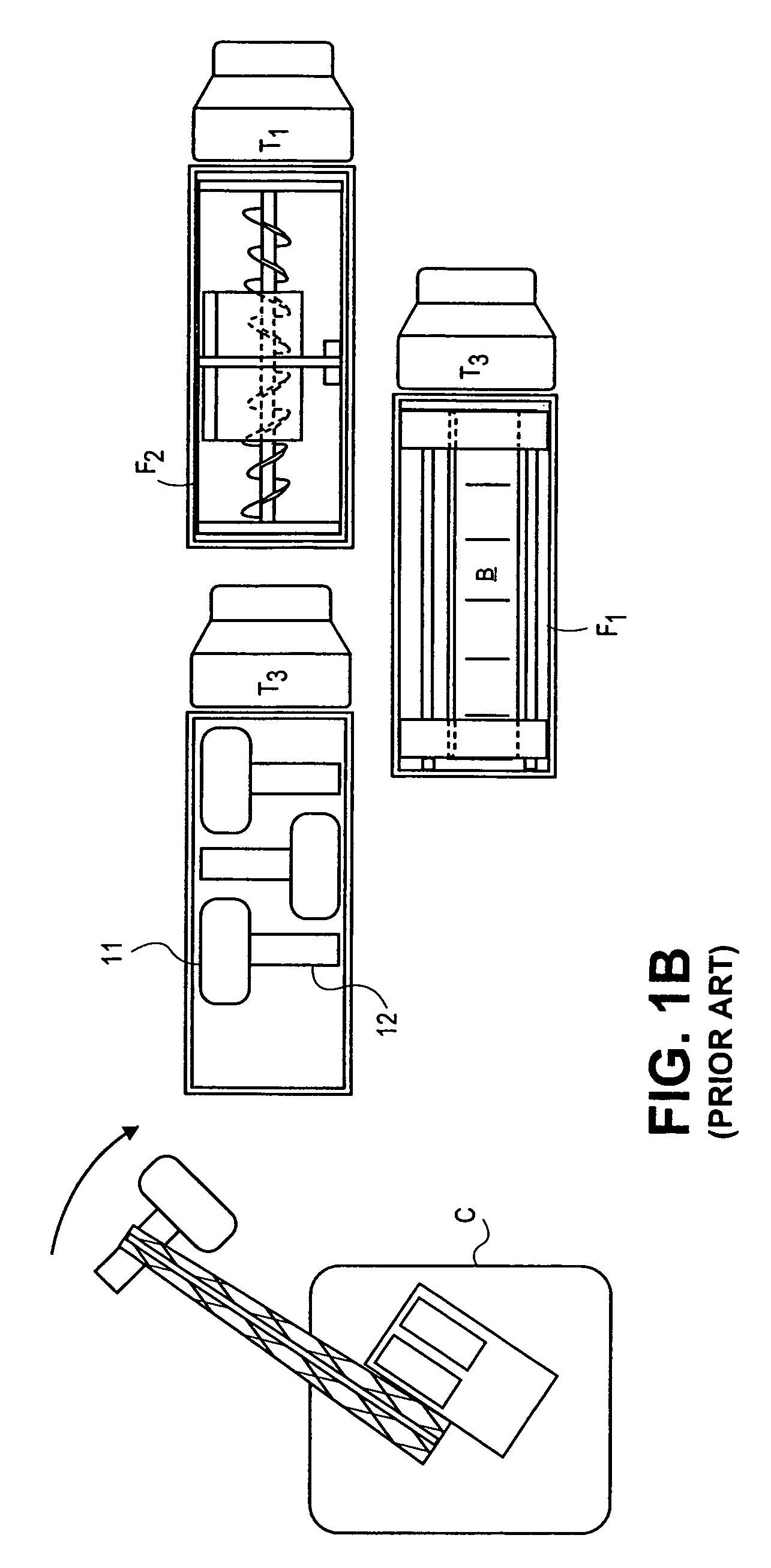Concrete placer/spreader having roll in/roll out conveyor
a conveyor and placer technology, applied in the field of placer/spreader, can solve the problems of not being supportive enough for delivery trucks, not being able to drive trucks, and having disadvantages and advantages of hinged conveyors
- Summary
- Abstract
- Description
- Claims
- Application Information
AI Technical Summary
Benefits of technology
Problems solved by technology
Method used
Image
Examples
Embodiment Construction
[0040]Referring to FIG. 1A, the apparatus of the closest prior art is illustrated deployed for paving. Placer / spreader 10 is illustrated with frame F1 containing a telescoping conveyor belt B. Frame F2 supports machinery module M, opposed augers A1 and A2, and a central auger bearing R. As has been emphasized, the opposed augers are heavy, have relatively high power requirements for operation, and have difficulty in spreading concrete across their bearing R. The illustrated placer / spreader 10 is followed by a paver P for the forming of the placed concrete. Four crawlers 11 with attached columns 12 propel placer / spreader 10.
[0041]In operational order, the belt places the concrete, the augers spread the concrete, and finally paver P forms the concrete into the road profile. Thus the progress of the placer / spreader 10 is from the left to the right of FIG. 1A.
[0042]Concrete is typically mixed at a batch plant (not shown) and transported in dump trucks D1 and D2. In the view here shown, ...
PUM
 Login to View More
Login to View More Abstract
Description
Claims
Application Information
 Login to View More
Login to View More - R&D
- Intellectual Property
- Life Sciences
- Materials
- Tech Scout
- Unparalleled Data Quality
- Higher Quality Content
- 60% Fewer Hallucinations
Browse by: Latest US Patents, China's latest patents, Technical Efficacy Thesaurus, Application Domain, Technology Topic, Popular Technical Reports.
© 2025 PatSnap. All rights reserved.Legal|Privacy policy|Modern Slavery Act Transparency Statement|Sitemap|About US| Contact US: help@patsnap.com



